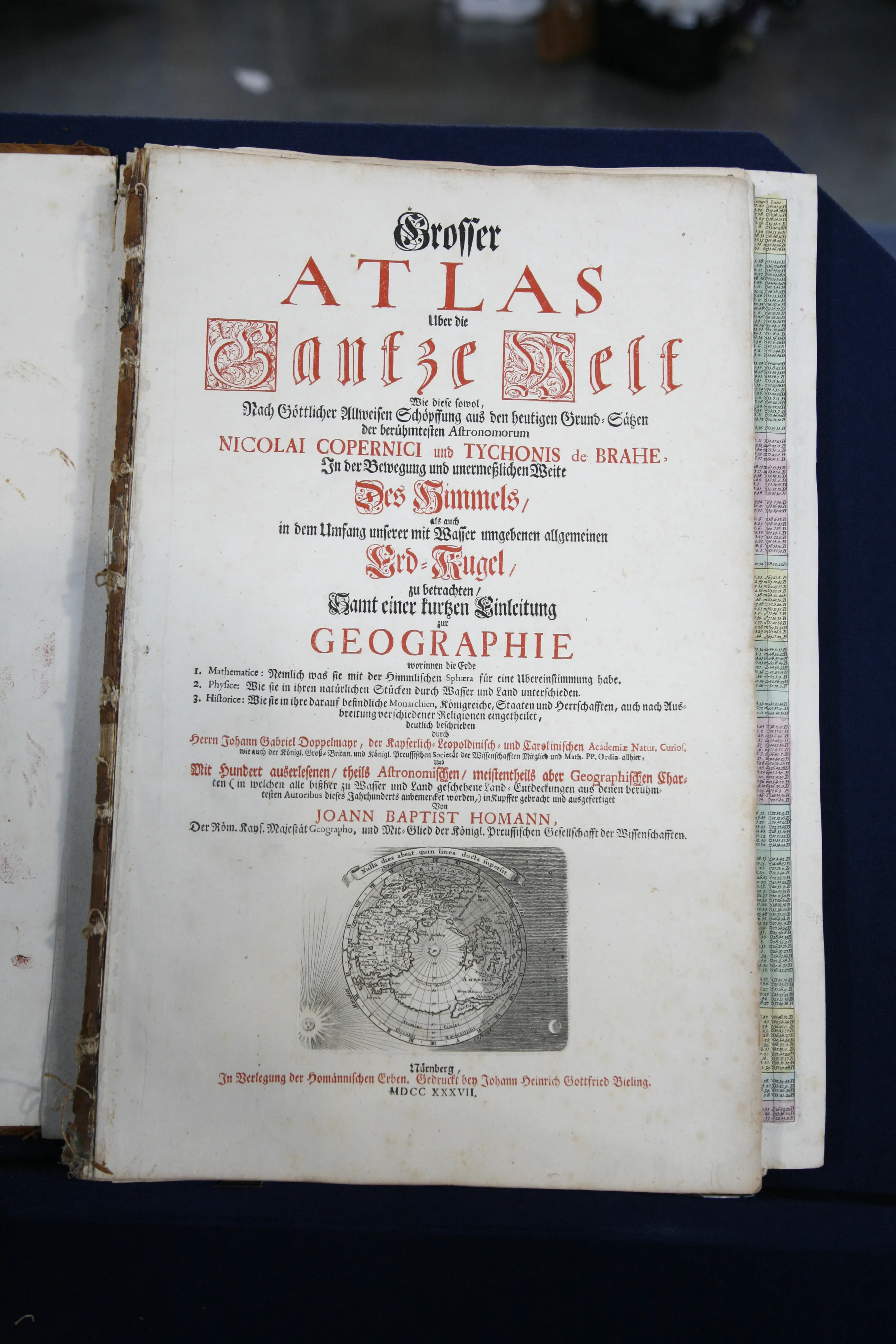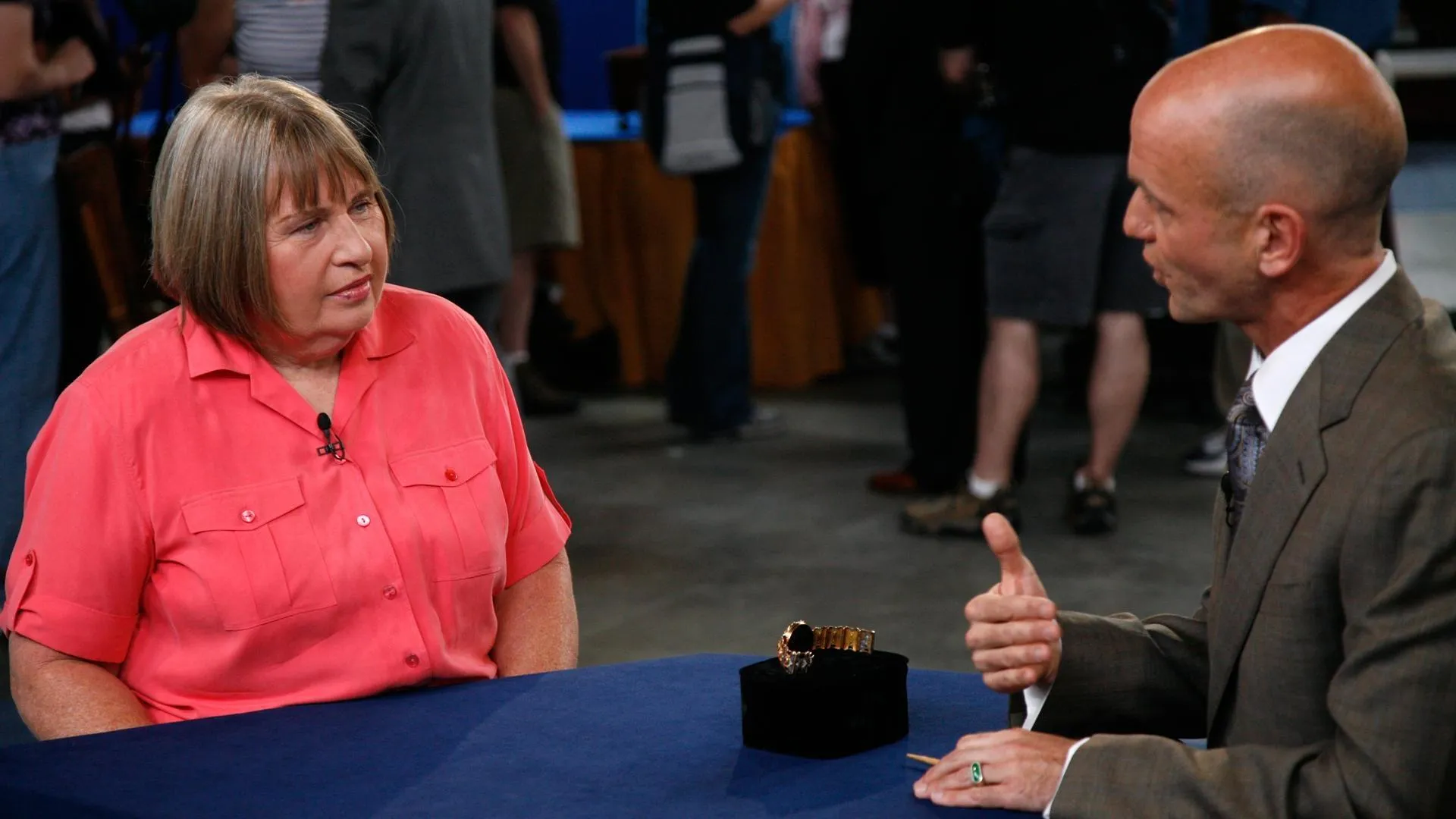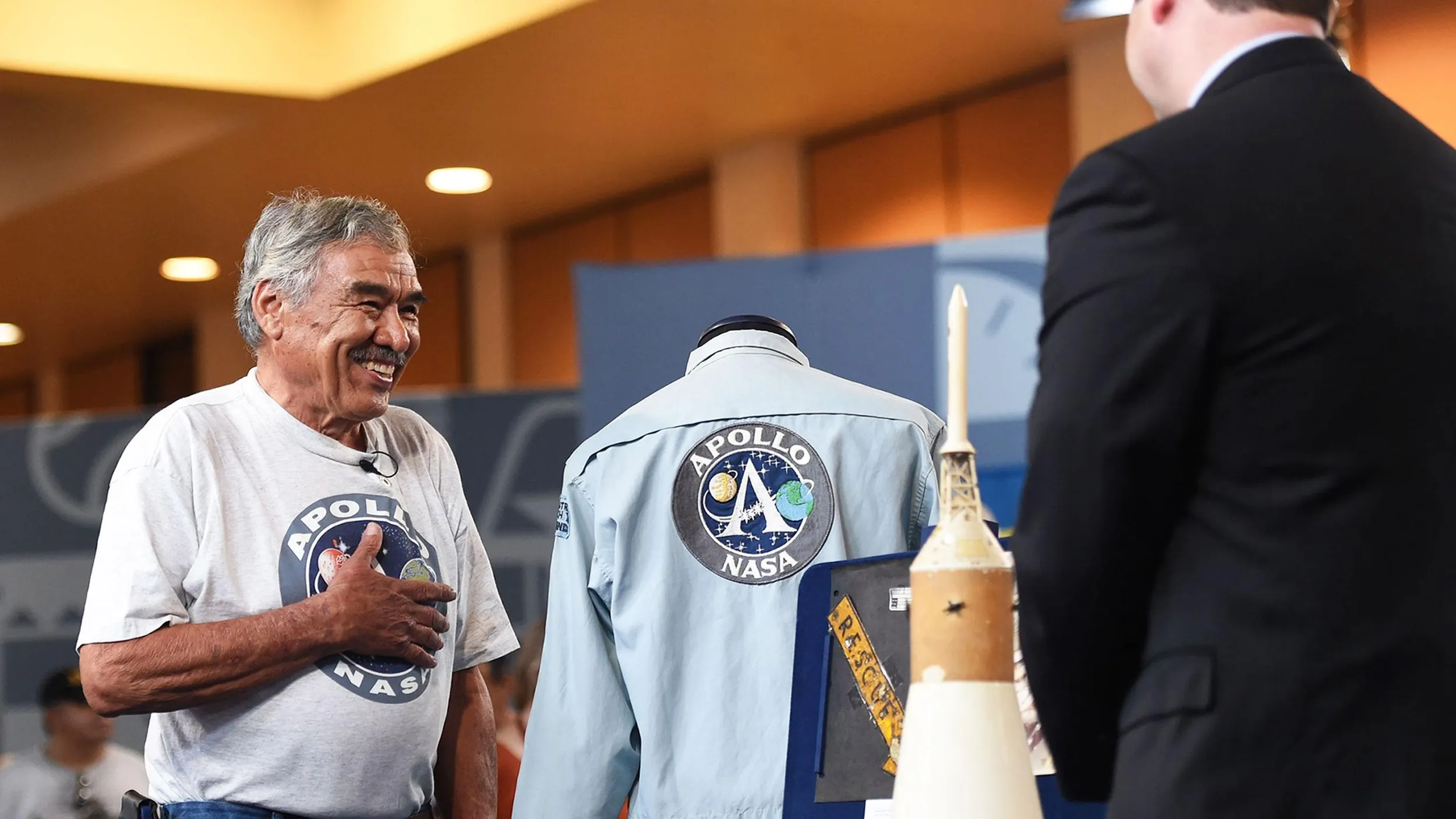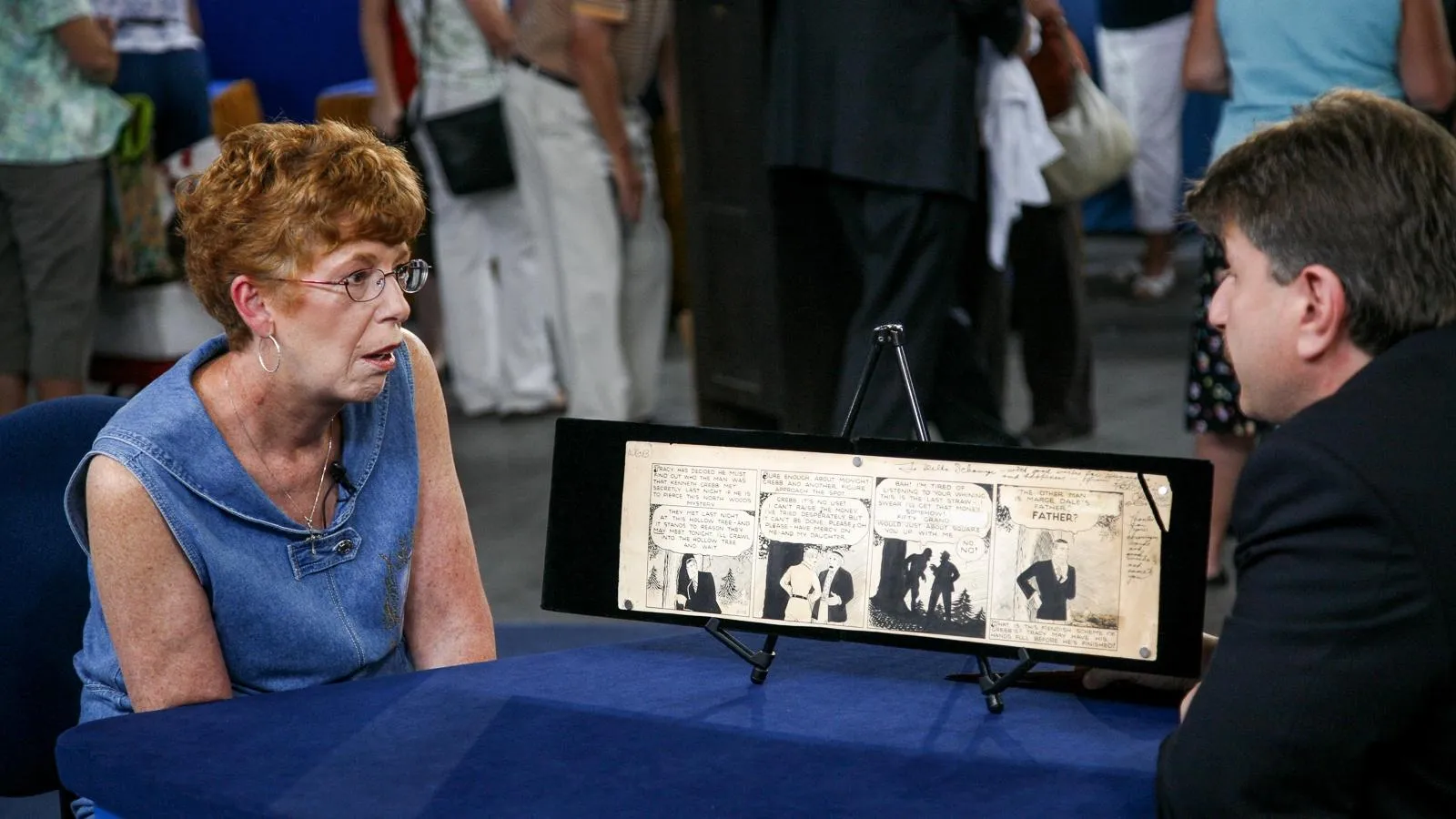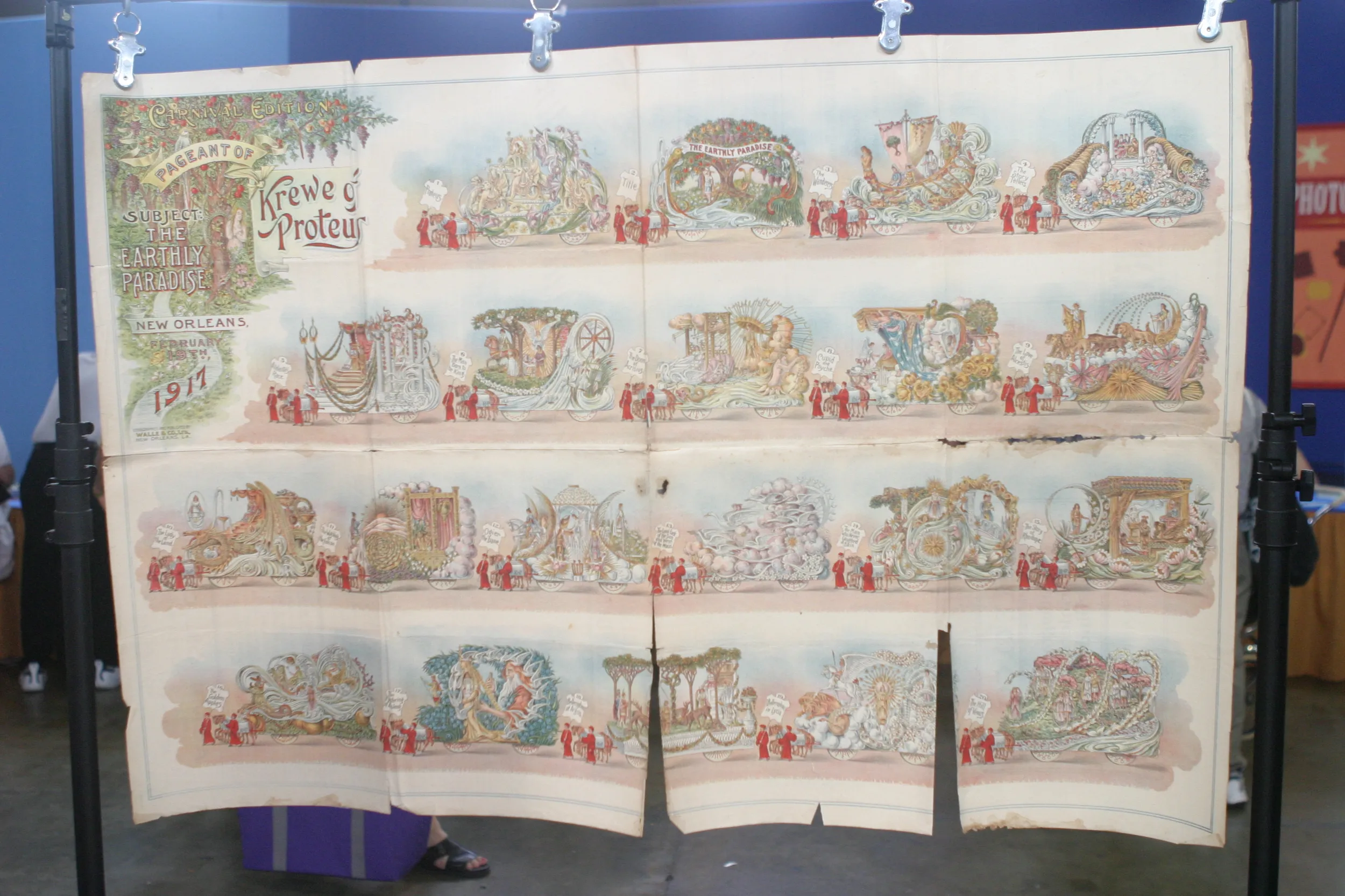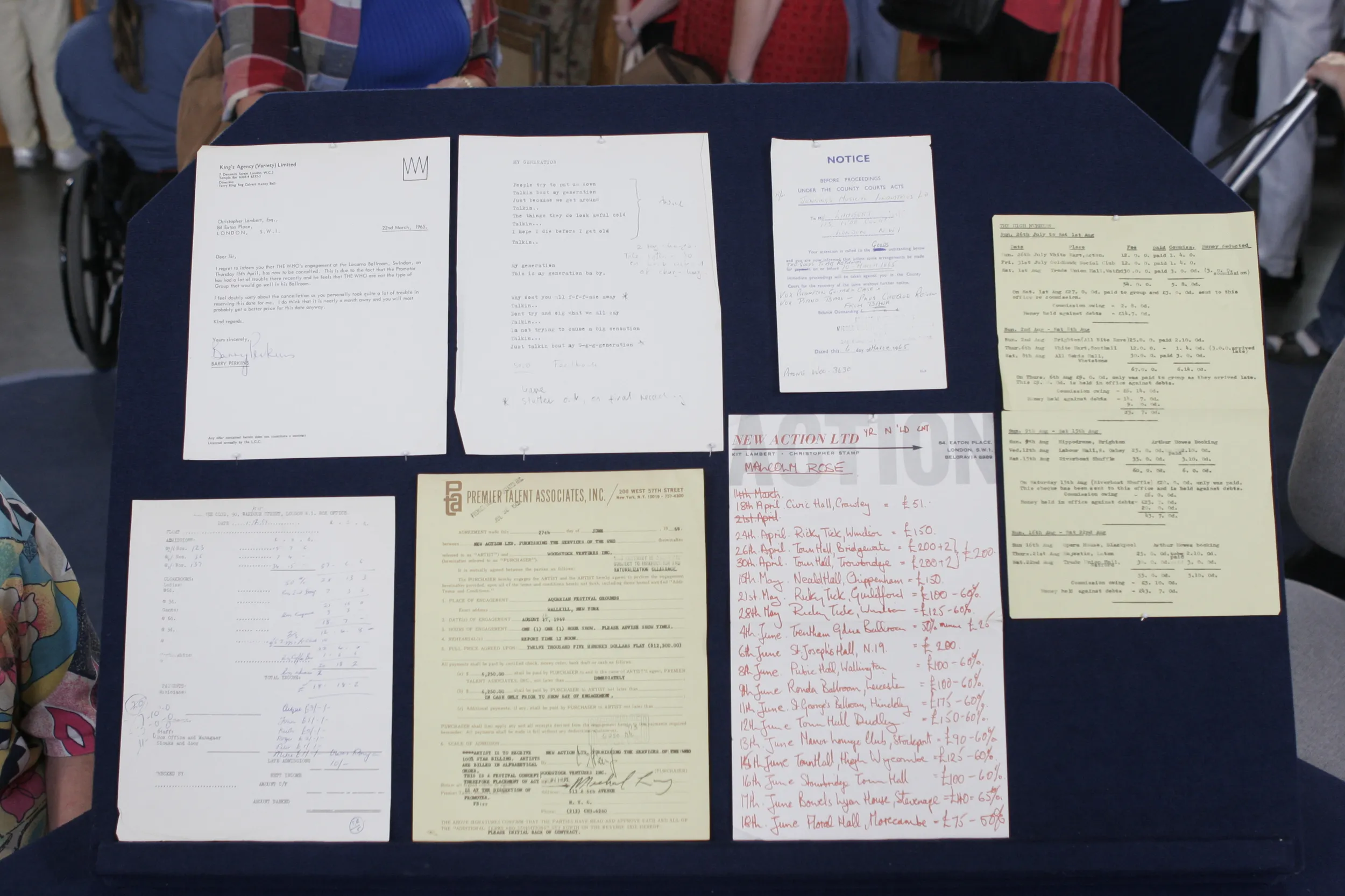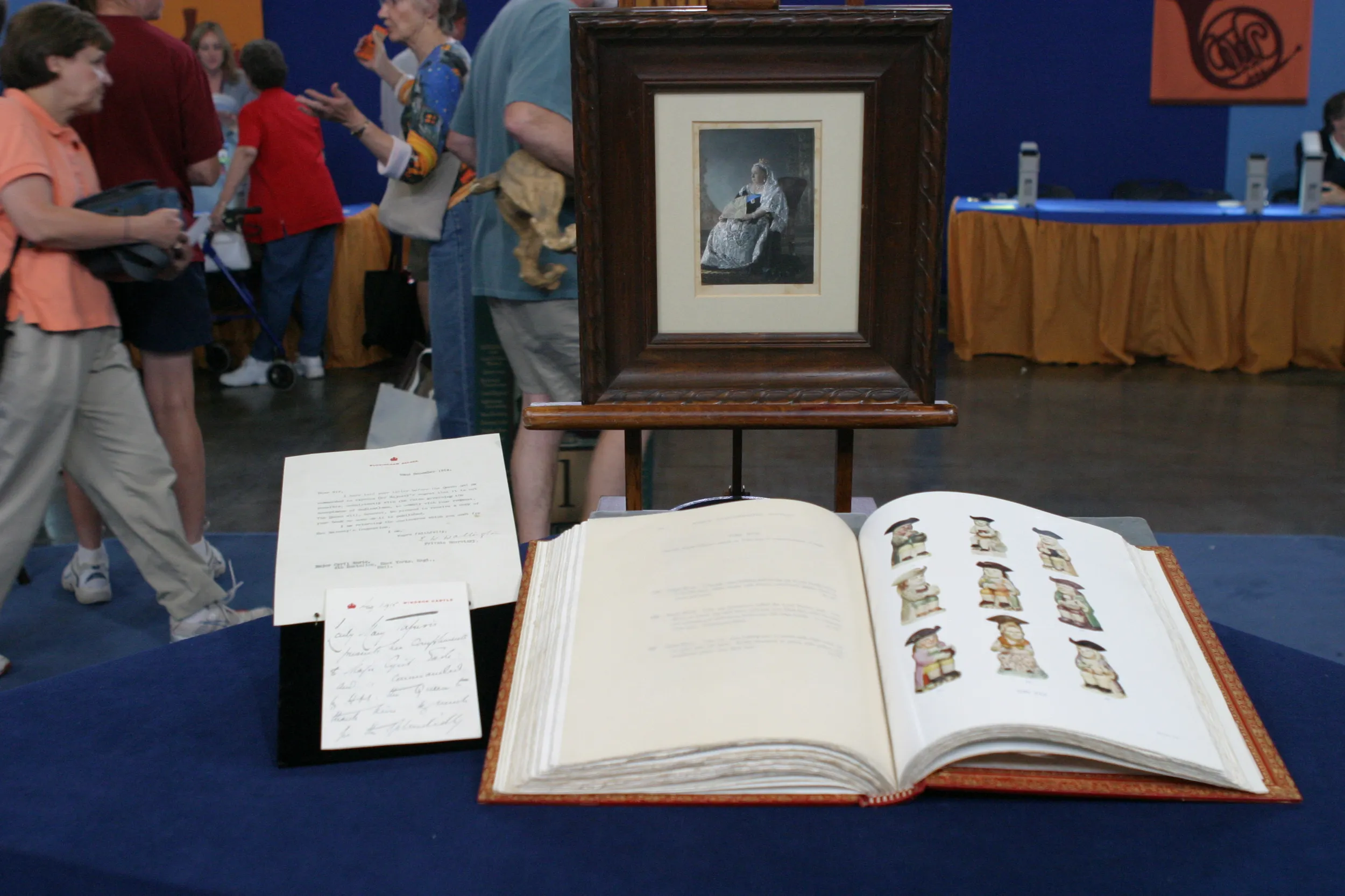GUEST: About 20 years ago, an elderly lady friend of my wife gave it to me as a gift, because she knew I enjoyed books and that I could read German. I really know very little about it, except that I know that it's a German atlas from the 1700s.
APPRAISER: Right, 1737 is the date. And it was published in Nuremberg. It's the work of Johann Baptist Homann. Homann was one of the most important map engravers and publishers in Germany at this period. And the thing that makes this unusual, it's not your everyday atlas-- it's a celestial atlas.
GUEST: Yes.
APPRAISER: All the color here on these pages was applied by hand, at great expense and lots of labor. One very unusual feature of it is the ink that's used on these stars. Every single star is illuminated in gold.
GUEST: That's amazing.
APPRAISER: This is a representation of the northern sky, with all the familiar constellations. Ursa Major, the Great Bear. Leo, the Lion. They're beautifully engraved, and then enhanced by the application of all these delicate shades of watercolor.
GUEST: Yes.
APPRAISER: It's very characteristic of German coloring from this period. Here's the Great Bear, looking particularly fierce. Here's Perseus.
GUEST: Perseus, right.
APPRAISER: And they're just exquisitely portrayed. And for its time, 1737, this was a very modern, scientific atlas. Let's look at something else. It looks like a normal representation of the globe.
GUEST: Right.
APPRAISER: But when you look over here, what do you see?
GUEST: I think that's California depicted as an island.
APPRAISER: You're absolutely right.
GUEST: Right.
APPRAISER: And that was a testimony to the fact that the exploration of the Earth was still going on in 1737.
GUEST: Sure.
APPRAISER: A lot of people were convinced that you could sail around California. Now, I can give you an idea of what an auction estimate would be.
GUEST: Okay.
APPRAISER: I think it would be $8,000 to $12,000.
GUEST: Oh, my.
APPRAISER: And it would be a little higher, but there's some staining at the back. If you did remove the plate, some of these would sell for as much as $2,000 apiece.
GUEST: No kidding.
APPRAISER: So the sum of the parts would be greater than an overall appraisal might yield.
GUEST: Is that right?
APPRAISER: Yeah.
GUEST: That's amazing.
APPRAISER: But I hope you don't break it up.
GUEST: Thank you, it's wonderful.
APPRAISER: Thanks for bringing it in.

